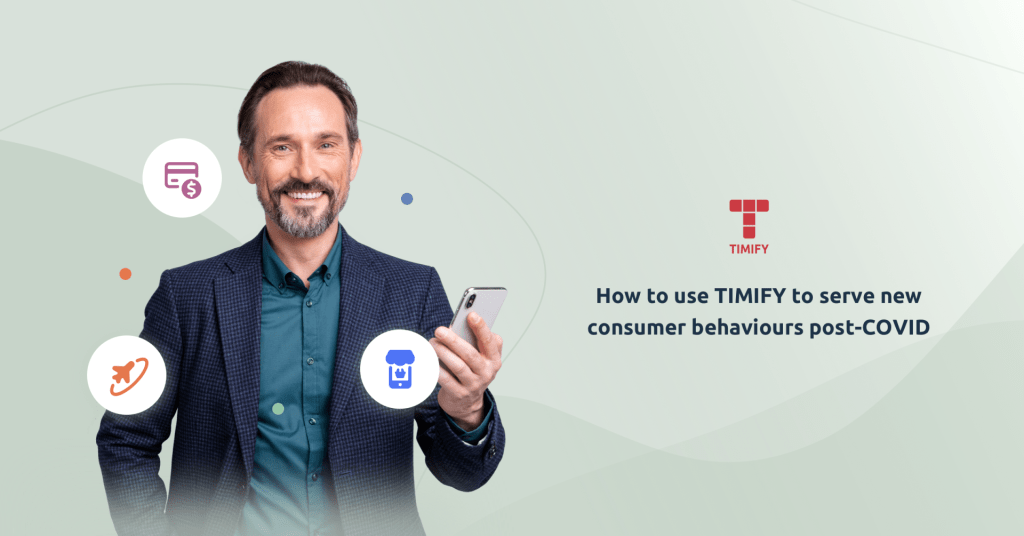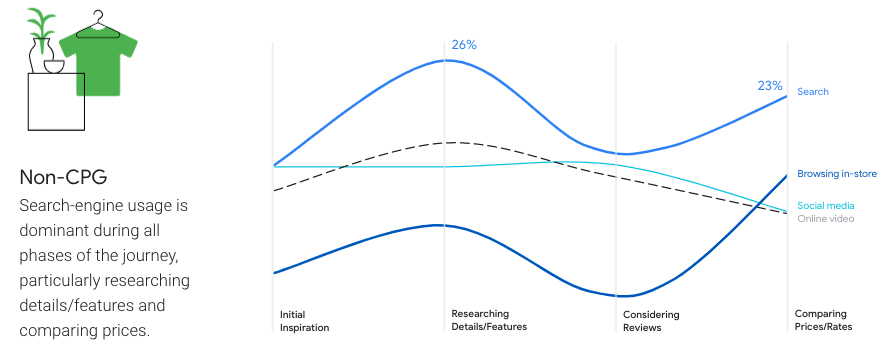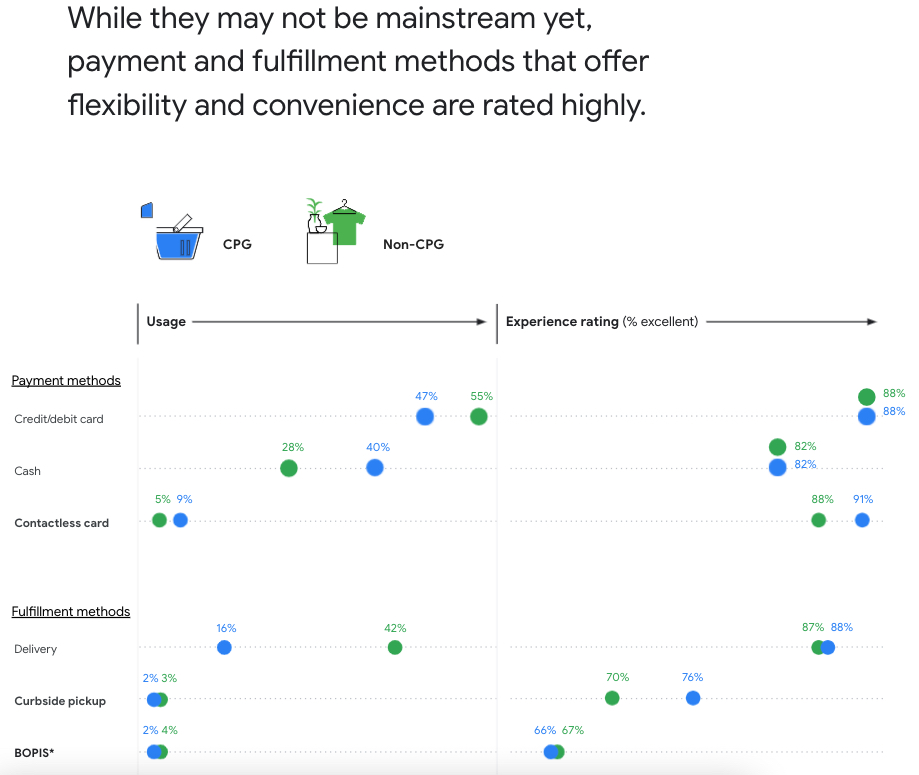

TIMIFY
TIMIFY is an appointment scheduling and resource management software for teams and enterprises

The pandemic changed consumer habits in a way no business could have anticipated or prepared for.
As we enter a phase where the virus is more under control and restrictions have eased in many regions, businesses want to know which behaviours will continue.
In turn, which of the new actions and technologies adopted by businesses to get through the lockdown period should be kept, adapted or closed.
This is where a fascinating piece of research by Google brings valuable insights, interviewing consumers about changes in their purchasing behaviour during the pandemic and if those habits have changed for good or only temporarily.
How have customer behaviours changed?
The Google research looked at aspects of technology and how they influence the decision making of your customers.
The findings outline key areas of focus in search, convenience, payment methods, reviews and testimonials, app and website development and connecting customers with expert staff.
“The pandemic has reinforced what brands and retailers should continue to focus on: enabling their customers to shop when they want, how they want, and where they want, all the while providing a pleasant and frictionless experience.”
The new path to purchase in travel, finance, and retail
All of these are key areas of functionality for TIMIFY, showing why our software became an important tool for more businesses during lockdowns, and will continue to be in the future.
Below we look at customer behaviours highlighted by Google’s research and how TIMIFY can help you support them.
1. Invest in search
The research looked at factors currently influencing the buying journey and found that search came out top, both in terms of how much it is used and how useful consumers find it.
For non CPG (clothing, home & garden etc.) the diagram below shows how search stays top throughout the buying journey, from inspiration to price comparison - the results were the same in the travel and finance sectors.

Of course, this may not come as a huge surprise considering a 27.6% worldwide rise in e-commerce and that many of those purchases will begin with a search.
But it reminds us that as well as raising your business profile on Google and optimising the journey from search results to purchase, data insights are vital for planning which services to prioritise in search and when.
How does TIMIFY help?
- Optimise your Google business profile with key info like opening hours, location, service descriptions
- Enable customers to book appointments directly from search results
- Use our comprehensive analytics to see which services, locations, stores or resources are your best performers, and at which times, allowing you to prioritise the services you promote through search
Find out more: How businesses use Reserve with Google to increase revenue
2. Invest in customer convenience
Google’s research found a number of factors important for customers post-pandemic, and many relate to making the purchasing journey more convenient.
Customers rate services such as online video, company website and apps, customer reviews, access to customer services and in-store browsing as highly useful. Not to mention specifically highlighting ‘convenience’ among the top reasons for purchasing online or in-person.
Services like curbside pickup and BOPIS (buy online pickup in-store) also rate highly for customer experience, as do flexible payment methods.

In finance, fast and convenient access to expert staff via video sessions has opened up advice services to a much wider audience - at the most crucial time. Undoubtedly this will continue to flourish post-COVID.
They key is removing barriers to customers making the most of these features. Registering should be instant, usage intuitive and access across multiple touchpoints.
Technology giving access to in-store or branch services should help avoid wait times and queueing, while genuinely helping consumers save time, effort and money.
How does TIMIFY help?
- From our core system to booking widgets, add-on apps and tailor-made functions, TIMIFY makes accessing services more convenient for every customer
- Key functions were adapted during the pandemic to allow companies to quickly activate in-store events, safely manage footfall, organise in-store pickups, offer video-based services and upscale new digital payment methods
Find out more: Seven different ways appointment booking software can revitalise your retail experience
3. Invest in developing your website and apps
Customers across all sectors highlighted the importance of company websites and apps that made their experience memorable and ultimately encouraged them to engage with a product or service.
For service providers, their website should make appointment booking for their entire offering easy to find, always available, effortless to book and more convenient than ever before.
“A brand’s own site/app is a key asset that should be leveraged. Ensure both content and UX is optimized to enable easy navigation, as well as to address specific pain points like data protection, pricing, account availability, and access to post-purchase support.”
The new path to purchase in travel, finance, and retail
Importantly, this does not only apply to online, but also where on-site apps optimise an in-person experience.
This could range from retailers using their website and apps to offer unique in-store experiences, access to events or in-store pickups, to the public-sector using virtual queueing apps and in-store screens to allow drop-in clients to limit unnecessary contact and avoid crowds.
When using third-party apps and platforms to offer more functionality, it’s crucial they all work in harmony, avoiding disconnects for customers and keeping your events and data in sync.
How does TIMIFY help?
Whatever the needs of your business of customers, TIMIFY offers a suite of functionality, tools and apps that can tailor your own website and applications to meet and exceed those needs.
- Booking widget – brings fast and reliable service booking to key areas of your website and social media
- Virtual queuing app - makes drop-in appointment booking easy and lets clients wait their turn off-site
- Survey app - automates the requesting and gathering of customer feedback after every appointment
- TIMIFY App Marketplace – integrate a huge range of third-party apps, including CRM tools, invoicing apps, messenger tools, video conferencing and much more
Find out more: TIMIFY APP MARKETPLACE
4. Invest in omnichannel
It’s clear that while the pandemic has forced consumers to embrace digital offerings, all channels are important in building the customer experience.

It’s crucial that online and offline channels interact and are synchronised to allow customers to move freely between them, according to their needs, situation and preferences.
A customer who books a physio appointment online at 1am, submitting their medical details and a photo of their condition, expects that on arrival at the practice the wait time will be minimal, staff will be fully briefed and with their documents to hand – and maybe their hot beverage of choice waiting.
They can book their next appointment at the reception desk - or by scanning a QR code if there’s a queue - but know that they can change the date using their phone the following day.
Payment and post-treatment follow ups should offer the option be dealt with digitally and without having to queue on-site.
How does TIMIFY help?
- Our calendar is the foundation for all customer touchpoints, including online bookings, call centres, reception staff, drop-in clients or standalone apps
- Real-time synchronisation protects against double bookings and errors
- Whichever touchpoints you activate with your customers, TIMIFY allows free movement between them, giving easy access to services any time or anywhere.
Start implementing the changes today
As highlighted above, for each of the four areas of focus, TIMIFY already boasts a wide variety of functionality to support businesses of any size and across all industries, while we continue to develop new features based on the demands of our clients.
Contact our team today to find out more specific details on how our appointment scheduling solution can help your business respond to the new demands of customers as we emerge from the height of the pandemic.

About the author
TIMIFY
TIMIFY is a global leader in scheduling and resource management software-as-a-service (Saas). It is known for its sophisticated, secure, and customisable enterprise-focused technology.